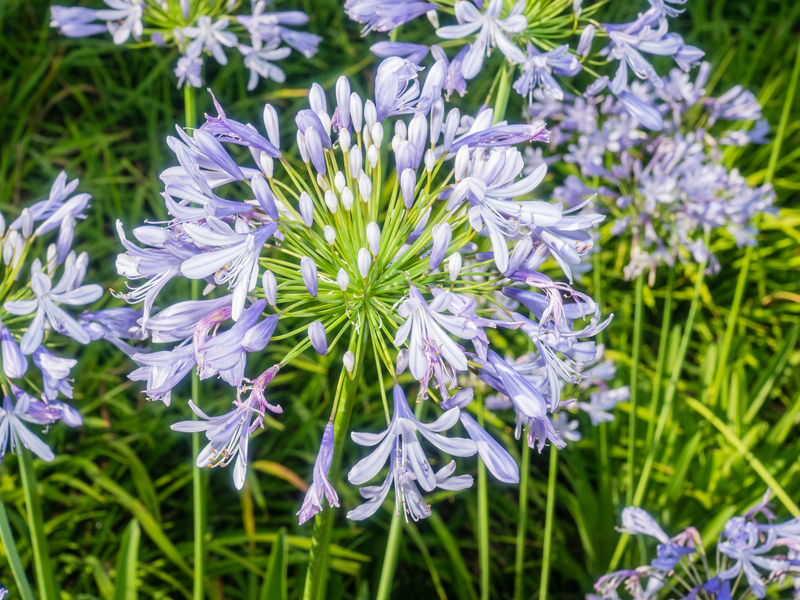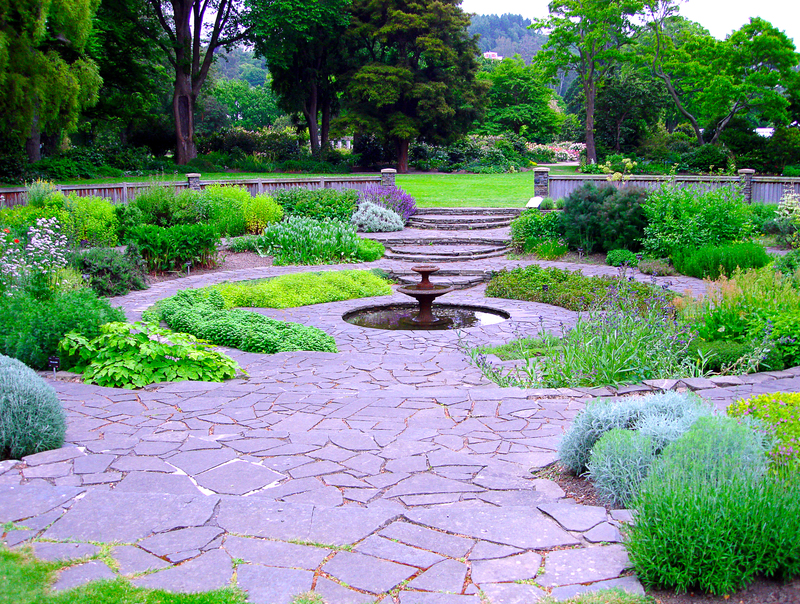Jumpstart Your Neglected Garden with These Simple Tips
Posted on 02/06/2025
Jumpstart Your Neglected Garden with These Simple Tips
Have months or even years gone by since your garden last thrived? Is your backyard looking overgrown, abandoned, or in need of some serious TLC? Don't worry--you're not alone. Many homeowners experience a period where life gets in the way, and gardens become neglected. The good news is you can jumpstart your neglected garden with some straightforward actions! This comprehensive guide will equip you with the knowledge, encouragement, and step-by-step tips needed to transform your outdoor space into a lush, vibrant retreat once again.
Why Reclaiming Your Abandoned Garden is Worth It
Tending to a forgotten or neglected garden isn't just about improving curb appeal. Revitalizing your garden can offer:
- Physical and mental health benefits—gardening is therapeutic and relieves stress
- Increased home value
- Better use of outdoor space
- Environmental benefits—supporting pollinators and improving biodiversity
With the right approach and tips, restoring your abandoned garden can be immensely rewarding and easier than you think!

Step 1: Assess the Situation
Before you begin digging or planting, take time to honestly assess the state of your garden.
Walk Through and Take Notes
- Which plants are dead, struggling, or thriving despite neglect?
- Are there any trees or shrubs that have become overgrown?
- How is the soil--is it compacted or eroded?
- Do you notice problem areas, such as persistent weeds or standing water?
- What features do you want to keep, refresh, or remove?
Pro Tip: Take before photos. Your progress will be more satisfying to track, and you may also spot problem areas you missed initially.
Step 2: Clear Out the Clutter
'Jumpstart your neglected garden' efforts always begin by removing debris, litter, or old garden waste that stands in the way.
- Pick up all fallen branches, dead plants, and discarded pots or tools
- Trim overgrown shrubs and trees to regain visibility and shape
- Remove any broken furniture or structures beyond repair
- Rake out thick layers of leaves or mulch that may have gone moldy
Recycling and Composting: Compost healthy plant debris for future use. Check your city's guidelines for disposing of large trimmings or hazardous materials.
Dealing with Weeds
Weeds thrive in neglected spaces. Dig them out by the roots and discard them properly (avoid composting mature weeds to prevent returning problems).
Tip: For very weedy gardens, cover the area with black plastic or cardboard for a few weeks. This helps smother persistent weeds before you tackle new planting.
Step 3: Revitalize Your Garden Soil
Neglected soil is often compacted, nutrient-poor, or covered with weeds. Healthy soil is the foundation of a thriving garden.
- Test your soil. Use an at-home testing kit or send samples to a local extension office. Check for pH, nutrients, and organic matter.
- Aerate the ground. Break up compacted soil with a garden fork or aerator to allow water and nutrients to penetrate.
- Add organic matter. Mix in compost, aged manure, or leaf mold to rejuvenate the soil's life and fertility.
- Mulch wisely. Once you've weeded and amended the soil, apply a fresh layer of organic mulch to suppress weeds and retain moisture.
_Remember_: Healthy soil leads to robust plants and minimizes future work in your reclaimed garden.
Step 4: Rescue Existing Plants (If Possible)
If you find plants that may still be alive, you can often revive them:
- Prune away dead wood and stems to stimulate new growth
- Water deeply but avoid overwatering initially--most neglected landscapes have parched yet tough plants
- Feed with a gentle liquid fertilizer to encourage recovery
- Relocate if necessary; overcrowded or shaded plants may do better elsewhere in the yard
Don't be discouraged if some plants can't be saved--it's normal. Use this as an opportunity to introduce new varieties suited to your local climate and gardening style.
Step 5: Make a Simple Garden Plan
Avoid being overwhelmed by jumping into a massive landscaping project. Use what you have and plan simple, actionable improvements for the neglected garden.
Set Priorities
- Revive usable flower beds or vegetable plots
- Create easy pathways for access and maintenance
- Add shade or privacy with trees or screens
- Introduce low-maintenance, drought-tolerant plants if you have limited time
Sketch a rough map of your garden--even a simple drawing can help organize your thoughts and tasks.
Step 6: Replant with Resilience in Mind
When giving your neglected garden a fresh start, it's best to choose tough, low-maintenance plants that are easy to care for. This will speed up garden recovery and prevent future neglect.
Great Plant Choices for New and Rejuvenated Gardens
- Native perennials--require less water and fertilizer
- Easy herbs like rosemary, thyme, or chives
- Ground covers--help outcompete weeds and add color
- Drought-tolerant shrubs and ornamental grasses
- Pollinator-friendly plants--lure bees and butterflies back to your yard
Tip: Visit a local nursery for expert advice and recommendations suited to your area and sun/shade needs.
Step 7: Water and Feed Wisely
It's tempting to overwater after a long dry spell, but a measured, consistent watering routine is vital for both new and existing plants. Here's how to get it right:
- Check soil moisture before watering; only add water if it's dry 1-2 inches deep
- Water early in the morning to reduce evaporation and fungal issues
- Use soaker hoses or drip irrigation to target plant roots
- Feed plants with balanced, organic fertilizer at planting time
Remember, deep watering encourages healthy root systems!
Step 8: Maintain Momentum with Simple Habits
After the initial burst of work, it's easy to let your revitalized garden slip back into neglect. Stay ahead with easy weekly tasks:
- Spend 10-15 minutes per day weeding or deadheading flowers
- Check for pests and diseases early to prevent bigger problems
- Top up mulch and compost each season
- Adjust your watering and feeding schedules with the weather
Make gardening a part of your routine, rather than a marathon event. Small, consistent efforts are the secret to keeping your garden beautiful and productive.
Bonus Section: Quick Fixes for Small Yards or Renters
Not everyone wants or needs to completely overhaul their outdoor space. You can still jumpstart your backyard garden with these quick fixes:
- Use large pots or containers for flowers and herbs
- Add a patch of wildflower seeds for instant color and pollinator appeal
- Lay down stepping stones through overgrown grass for a defined path
- Create a simple seating nook with a bench or chair surrounded by pots
Even just one small improvement can spark renewed interest and pride in your yard!
Common Problems (and Solutions) When Restoring a Neglected Garden
- Excessive weeds: Smother with mulch or weed fabric, and hand-pull stubborn culprits weekly.
- Compacted clay soil: Aerate, incorporate gypsum and organic matter, and avoid walking on wet soil.
- Unidentified plants: Use plant ID apps or consult local gardeners to figure out keepers vs. weeds.
- Pest infestation: Remove debris, keep plants healthy, and use non-toxic solutions where possible.
- Feeling overwhelmed: Divide the garden into zones and tackle one area each week.

Seasonal Tips to Keep Your Rejuvenated Garden Thriving
Spring
- Plant fresh annuals and perennials for bursts of color
- Prune shrubs and trees before new growth appears
- Mulch beds for weed control and moisture retention
Summer
- Water deeply during dry spells
- Harvest your vegetables and herbs regularly
- Pinch back flowers to encourage blooms
Autumn
- Rake leaves and add them to compost
- Plant bulbs and cold-resistant plants for next spring
- Cut back faded perennials
Winter
- Protect fragile plants with mulch or covers
- Plan new projects for next season
- Clean and store tools
Conclusion: Your Restored Garden Awaits
Revitalizing an overgrown, neglected garden might seem intimidating, but with some simple steps and a dash of patience, you can create a space that brings joy to you and your family all year round. Start by clearing clutter, improving your soil, and selecting hardy, low-maintenance plants. Consistency is key--little by little, your neglected garden will transform into a thriving oasis. Get outside, get your hands dirty, and jumpstart your unused garden today!
Ready to begin? Gather your gloves and tools, print this list, and discover the satisfaction only a beautiful garden can bring. Happy gardening!

